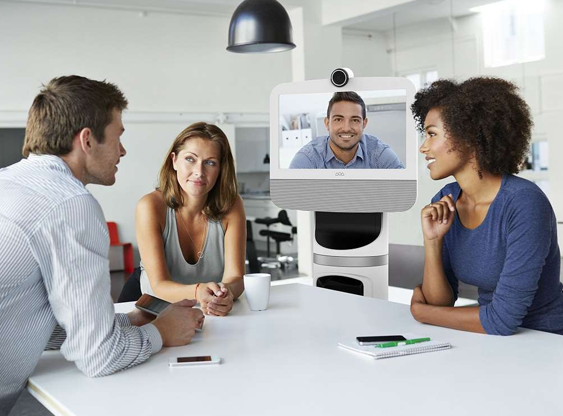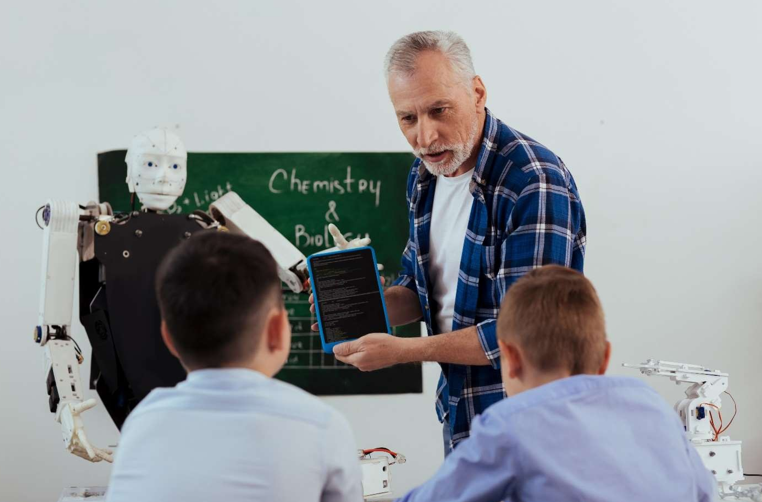Scientist argues that replacing the human teacher with a robot is still a ‘NO’
In September 2017, at The British Science Festival, a specific deadline for the automation of education was set. Anthony Seldon, a British Education expert, was the first scientist in the world who say that teachers would be replaced by robots in 2027. We are now in 2024, more than halfway through the prediction time. How far have we come in the world of robot teachers already? Where exactly does the machine stand in the classroom? Can we reach the deadline by 2027?
Firstly, let’s look at the focus of research in 2017. According to The Telegraph, the emphasis of research at that time was on developing teacher robots that could read students’ brains and facial expressions. Is it already well-developed today? The answer is YES! The teacher robots used in schools today can already read students’ emotions. Let’s say Pepper Robot, which is claimed by SoftBank Robotic as the first emotional robot capable of understanding and reacting to pupils’ emotions. If your teacher is Pepper, by using your expression, gesture, and voice, he will be capable of detecting your mood and adapting his behavior to you.
Then, what’s becoming the research focus of teacher robot development in 2022? Almed Hamzah, a Ph.D. candidate in Software Technology for Learning and Teaching at Utrecht University, said that the spotlight of educational robot development today is telepresence robots. JoAnne Yates, from MIT Sloan School of Management, in a youtube interview, described telepresence robots as the new technology to bring an isolated teacher into a virtual classroom.

“May I join you?” Telepresence Robot | CREDIT: Ava Robotics
The idea of a telepresence robot is actually not categorized as a new invention. The first telepresence robot was developed in 1958 by Ralph Mosher, an engineer working for General Electric. Even though it was already introduced a long time ago, the use of telepresence teacher robots was less widespread than they are today. Telepresence teacher robots have become familiar since 2020 due to the COVID-19 pandemic.
Telepresence robots act as avatars for teachers who cannot attend in the classroom. The presence of the wheel in the telepresence robots makes them different from the usual online meeting. A teacher at home can connect to the robot at school, communicate with pupils, guide a science experiment, and answer questions. For assessments, students can take photos and send their work to the teacher for checking.

Devon in Class | CREDIT: VGo Robots
Interestingly, the focus of telepresence robots in education nowadays is no longer only on the teacher but also the student. VGo Robot, for instance, is a telepresence robot produced by Vgo Robotic Telepresence that have being used successfully today by Cedar Hills ISD in Texas for students who can’t physically go to school due to illness, accident, or other medical reasons.
However, even though the presence of telepresence robots seems to have a significant impact on education, it is still debatable to consider that machines as robots. Maartje de Graaf, an assistant professor of human-robot interaction at Utrecht University, argues that the machines can’t be regarded as robots. Her argument is based on what the definition of a robot actually is.
“In my opinion, a robot is a physical object in the world that need to be able to act autonomously and have a greater impact to help human in their task. Telepresence machine is just substitute the presence of a teacher in the classroom, all the teacher task is still needed to be done by the teacher itself. Telepresence machine is less than a robot,” said Maartje.
Furthermore, talking about teacher robots in general, research published by the International Journal of Social Robotics show a promising result for teacher robots. The finding stated that teacher robots today have achieved similar levels of appreciation in the affective domain as human teachers. The question then arises: Can a human teacher be replaced with a robot in 2027?
Rather than replacing teachers in the classroom, robots are more likely to be teaching assistants or learning resources. Robots are just a machine with artificial intelligence that can do a specific task if it has been programmed before.
“Robot is nothing more than a computer program.” – Almed
Rather than replacing teachers in the classroom, robots are more likely to be teaching assistants or learning resources. Robots are just a machine with artificial intelligence that can do a specific task if it has been programmed before.
In addition, as a researcher in human- robot interaction, Maartje also disagrees with replacing teachers with robots. The reason is that robots can only make decisions based on human input in a specific direction. At the same time, pupils’ issues such as shyness, reluctance, confidence, and frustration need more than one approach to be solved.
“The intelligence of robots is still limited and only know black and white. Relationship between teacher and student is not only in the ‘black’ and ‘white’ area, sometimes it could be ‘grey’. That ‘grey’ couldn’t be accomplished by a robot.”- Maartje
To wrap up, the prediction that robots will take over teacher jobs in 2027 seems artificial. However, we still have 5 years to reach 2027; the advancement of technology might say differently. The biggest challenge to achieving the deadline is making the intelligence robots work as naturally as humans. That’s not a simple thing because being a human is indeed far easier than building a human.
